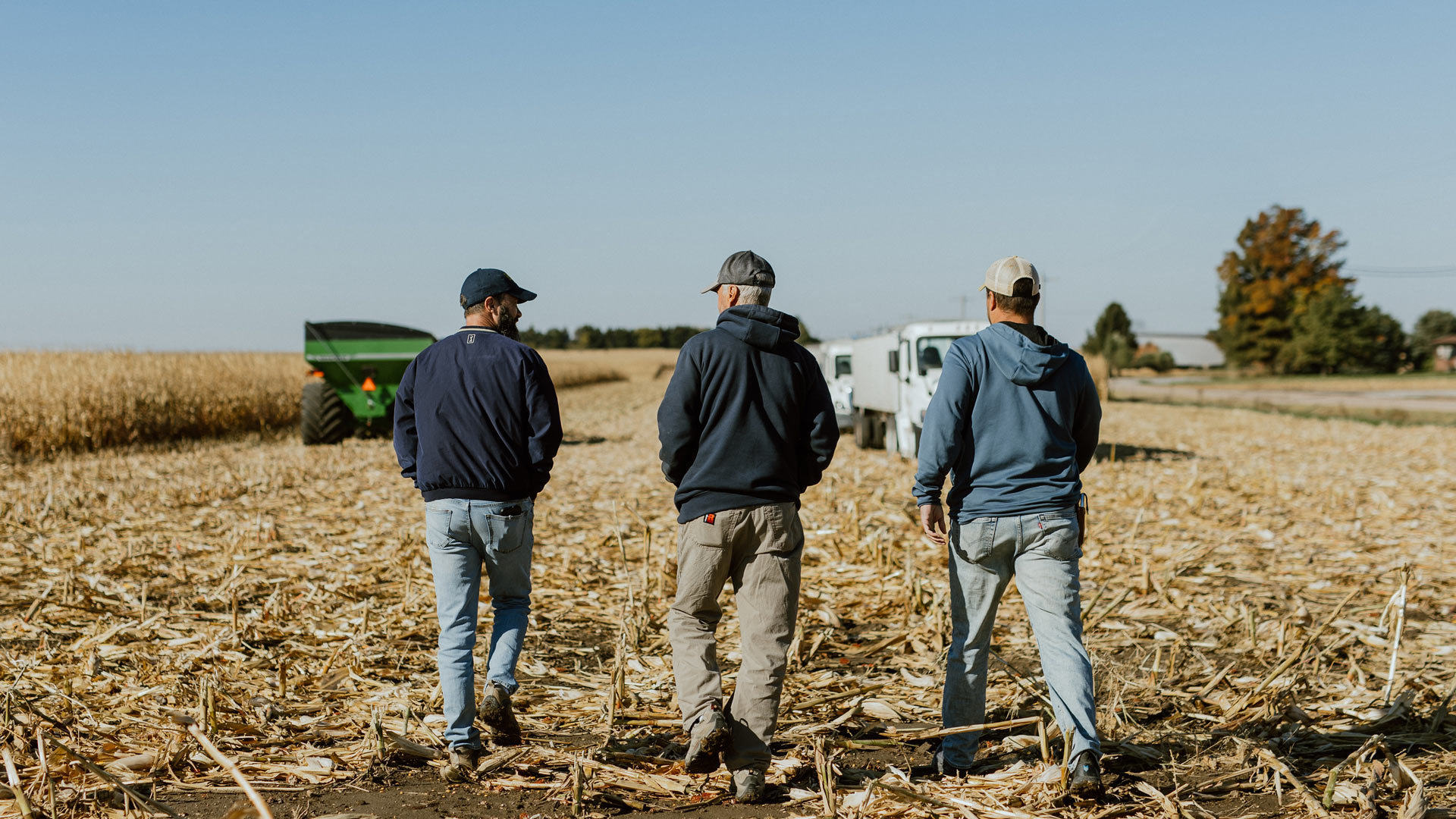Corn planting is a challenging process. Farmers need to understand crop science, be excellent weather forecasters and rely on experience to choose the best time to plant corn. When the time is right, they work hard to get their crops planted quickly and efficiently before conditions change.
Fifth-generation farmer Andy Jobman and his family plant yellow corn and food grade white corn each year near Gothenburg, Nebraska. It’s critical that he and his father, Terry, and his brother, David, get their crop planted in ideal conditions so the plants have the opportunity to thrive and produce a high-quality, abundant yield at harvest.
Farmers only have one chance at planting each year, so they are ready to plant as soon as the environment and weather create optimal conditions.
“Once the conditions are right it’s go, go, go until you have everything in the ground,” said Jobman, whose family also grows alfalfa hay and soybeans.
What Conditions Does Corn Need to Grow?
Any plant needs ideal soil temperature and moisture to germinate. For corn, that’s a soil temperature of at least 50 degrees and nice warm days to encourage germination and healthy development.
However, soil temperature isn’t everything. There are circumstances where Jobman will hold off on planting even if the soil temperature reaches 50 degrees.
“If you have 50-degree soil temperatures, but in a day or two you’re going to have a blizzard, it’s probably a good idea to wait,” he said. “Not only are we waiting for that soil temperature to get up there to an optimal point, we’re also looking for that optimal forecast too.”
When Do Farmers Typically Start Planting Their Corn Crop?
Most years, Jobman starts planting around April 22. By that time, the soil temperature has usually reached 50 degrees, the days are warm and there’s enough moisture. Typically, they want to have their crop planted before May 15 to ensure the crop has enough time to mature before harvest.
Timing is important when growing corn because the young plants need warm soil, ideal moisture and warm weather to germinate. While some moisture is necessary, too much rain — especially paired with unseasonably cold, chilly spring days — can be a problem.
“Those first 24-36 hours after the seed is placed in the soil is really critical. That’s when the seed is absorbing moisture to start the germination process. So, if the water in the soil is really cool, or it gets cooled down and chilled, this can result in some negative effects,” Jobman said. “The seed might get too chilled and has the potential to rot. It also allows for the opportunity for fungus and bacteria to enter that seed.”
Details matter: The ideal planting depth and spacing for corn
- Depth: Typically, the ideal depth for planting corn seeds is two inches.
- Spacing: How far apart corn is planted varies. The most common factor is whether the corn is irrigated. According to Jobman, irrigated corn plants are typically planted about 6.5 inches apart. He said corn that is not irrigated, called dryland corn, is typically planted about 10 to 12 inches apart to make sure each plant receives enough moisture.
How Do Farmers Prepare for Corn Planting?
A big part of how farmers prepare for corn planting season is making sure their farming equipment is in top shape. This includes repairs, tune-ups, last-minute adjustments to settings on the planter and inputting planting plans into the tractor’s on-board computer.
Called prescriptions, these plans give information to the tractor’s GPS-enabled computer system, such as how many plants per acre should be planted in each area of the field. This allows Jobman to grow more plants per acre in the more productive areas of the field — optimizing his crop based on the productivity level.
“In other spots of the field where either it’s not irrigated or it’s just a lower productivity area of the field, you’re going to plant fewer plants per acre,” he said.
How Long Does Planting Corn Usually Take?
How long it takes to plant corn depends on several factors, including how many acres a farmer has to plant, what type of equipment he or she has and whether or not a farmer has help. Additional help can reduce downtime by bringing corn seeds for planting, any necessary fertilizer or replacement parts directly to the field. Often, these are family members, farmers who are retired from their own operations or seasonal help, not on the farm full-time.
Because farmers spend long hours in the field to get the crop planted, often, families also bring meals to the farmers, so they don’t have to leave the field. Meals are a good opportunity for farmers to stop planting and take a break. Stopping for rest helps farmers reduce accidents and increase situational awareness during the busy, high-stress planting season.
If everything goes smoothly, Jobman estimates he and his family can plant their corn and soybean crop in 12 to Weather is the most common cause of delays. Equipment breakdowns are another.
“Your tractor could have a part break down on it. The planter could have something that needs to be replaced or adjusted,” he said. “So, you’re constantly dealing with keeping those machines up and running.”
Patience is a key in the process and understanding all the factors play a role in the big picture.
How Has Technology Affected Planting Times for Corn?
Technological advancements have changed agriculture throughout history, enabling corn farmers and other growers to plant crops faster and more efficiently. For Jobman, this includes advancements to corn farming equipment, like the GPS-guided navigation system on the tractor helps him catch minor issues before they become big problems.
“Our tractors are driven by GPS. Once I hit my GPS button and engage it with the tractor, I can turn around in my seat inside the tractor cab and watch the planter,” he said. “This really helps catch problems before they become something very large. You might catch a bearing in a wheel starting to go out that just has a slight wobble you may not have caught if you were [only] focused on going straight without a GPS system.”
Not only do tractors have GPS navigation, they also can monitor soil conditions as they drive through the field. Jobman’s equipment is outfitted with a device that provides real-time data on important factors such as soil temperature and the amount of moisture and organic matter in the soil.
“Those are two useful bits of information you can see if you have too much dry soil that’s falling down into that seed trench, and you can make adjustments to improve on the fly,” he said. “And then the organic matter is telling us how much residue we have out in the field, how much carbon and biological material are out there.”
Why Planting Time Is So Important for Farmers
Planting is a fast-paced season that only comes around once per year for corn farmers. How well the crop germinates and grows can have a major impact on the quality and quantity of the crop, so there’s a lot of pressure during planting season.
“If you think about it, if the average farmer farms for 40 to 50 years, he’s only actually getting 40 to 50 chances to do something perfect,” Jobman said. “You get 40 shots at doing it right and making it better every year.”




